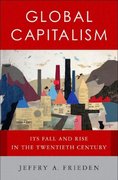Question
a) Some college students in America have reported that the prices of (print) textbooks are quite high (reaching up to $300 for some textbooks). Note
a) Some college students in America have reported that the prices of (print) textbooks are quite high (reaching up to $300 for some textbooks). Note that the college textbook publishing industry contains a few large firms. Why are textbook prices so high? Shouldn't one expect competition to drive them down? What about the elasticity of demand for textbooks (as applied to the instructor and the retail bookstore industry, in general)? Why do publishers not lower their college textbook prices? (10 marks) b) The markets for soft drinks exhibit the characteristics of monopolistic competition. Explain the competitive features of two products, such as Pepsi and Coke, in some detail. In your answer, refer to the following: relationship between the two goods; monopoly or market power of these two giant soft-drink makers relative another cola maker, say RC, whose cola tastes differently; customer behavior; elasticities of demand; prices of these two soft drinks. (10 marks) c) Discuss the implications of product differentiation for firms and customers alike as well the relevant market structure(s). Is product differentiation spurious (fake or perceived) or real? Can you give some examples? (10 marks) d) According to public-interest groups, subsidies help consumers and producers alike. By contrast, economists oppose subsidies, arguing that they result in inefficiencies (in the level of output). Explain which side you believe is correct. Discuss what a subsidy is and its impact on the relevant market
Step by Step Solution
There are 3 Steps involved in it
Step: 1

Get Instant Access to Expert-Tailored Solutions
See step-by-step solutions with expert insights and AI powered tools for academic success
Step: 2

Step: 3

Ace Your Homework with AI
Get the answers you need in no time with our AI-driven, step-by-step assistance
Get Started


